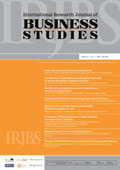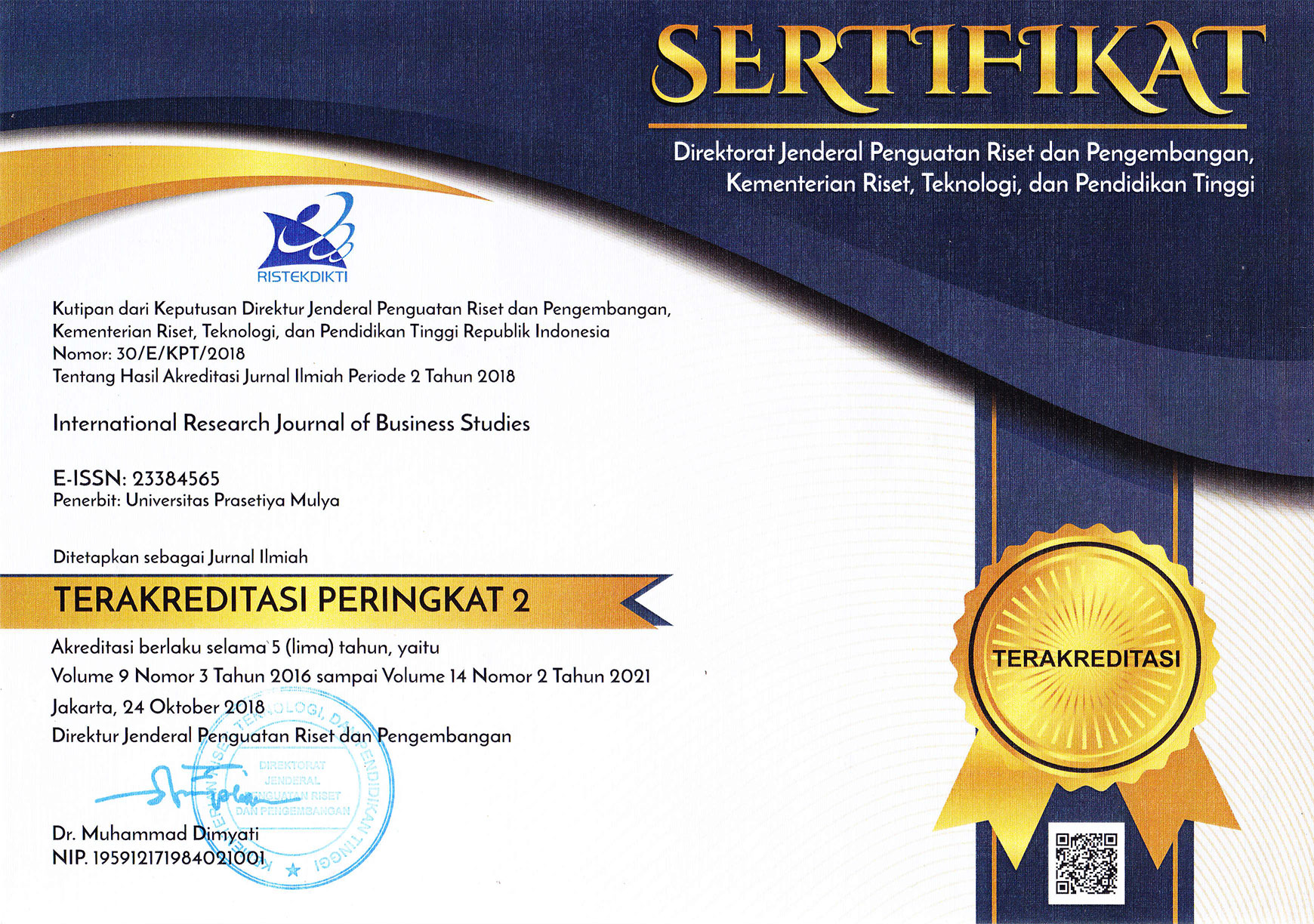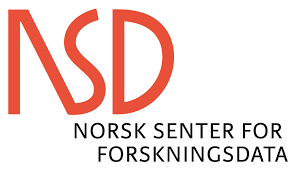Article Metrics |
|
|
A Systematic Review of Financial Intermediaries Research
Abstract
The purpose of this study is to conduct a systematic review on Financial Intermediaries (FI) with a view to review extant discourses, identify gaps and provide directions for future research in this area. The Systematic Assessment Quantitative Technique (SQAT) developed by Australian researchers Catherine Pickering and Jason Anthony Bryn in (2013), was used to identify and review 43 peer- reviewed Financial Intermediaries (FI) articles from ten high quality academic databases. The primary focus of FI articles in this review were on nine themes and two theories were predominant. The various themes developed from literatures were discussed. The findings of this study would look to guide policy planners and managers on the integral role of financial intermediaries in their daily activities stressing how its overarching function cuts across all facets our financial lives.
Keywords: Financial intermediaries, SQAT, Panel data, Risk management
Full Text:
References
Adrian, T., Etula, E., & Muir, T. (2014). Financial Intermediaries and the Cross‐Section of Asset Returns. The Journal of Finance, 69(6), 2557-2596.
Alberici, A., & Querci, F. (2016). The quality of disclosures on environmental policy: the Profile of financial intermediaries. Corporate Social Responsibility and Environmental Management, 23(5), 283-296.
Alexander, G. J., & Baptista, A. M. (2009). Stress testing by financial intermediaries: Implications for portfolio selection and asset pricing. Journal of Financial Intermediation, 18(1), 65-92.
Andrikopoulos, A., Samitas, A., & Bekiaris, M. (2014). Corporate social responsibility reporting in financial institutions: Evidence from Euronext. Research in International Business and Finance, 32(2014) 27-35.
Andriosopoulos, K., Chan, K. K., Dontis-Charitos, P., & Staikouras, S. K. (2017). Wealth and risk implications of the Dodd-Frank Act on the US financial intermediaries. Journal of Financial Stability, 33, 366-379.
Atanasov, V., Davies, R. J., & Merrick Jr, J. J. (2015). Financial intermediaries in the midst of market manipulation: Did they protect the fool or help the knave?. Journal of Corporate Finance, 34, 210-234.
Beck, T., Colciago, A., & Pfajfar, D. (2014). The role of financial intermediaries in monetary policy transmission. Journal of Economic Dynamics and Control, 43, 1-11.
Begg, I. (2009). Regulation and supervision of financial intermediaries in the EU: The aftermath of the financial crisis. JCMS: Journal of Common Market Studies, 47(5), 1107-1128.
Bertocco, G. (2011). Are banks special? Some notes on Tobin's theory of financial intermediaries. Journal of the Asia Pacific economy, 16(3), 331-353.
Biza-Khupe, S., Ward, T., & Ahmed, A. D. (2012). The distinct influences of financial information intermediaries on consumer rationalisation of vehicle finance. The Journal of Applied Business and Economics, 13(1), 95.
Chen, D., Guan, Y., Zhang, T., & Zhao, G. (2017). Political connection of financial intermediaries: Evidence from China's IPO market. Journal of Banking & Finance, 76, 15-31.
Cheng, X., & Degryse, H. (2010). The impact of bank and non-bank financial institutions on local economic growth in China. Journal of Financial Services Research, 37(2-3), 179-199.
Chernobai, A., Jorion, P., & Yu, F. (2011). The determinants of operational risk in US financial institutions. Journal of Financial and Quantitative Analysis, 46(6), 1683-1725.
Chue, T. K., & Cook, D. (2008). Sudden stops and liability dollarization: Evidence from Asia's financial intermediaries. Pacific-Basin Finance Journal, 16(4), 436-452.
Ciccarone, G. (2008). Finance and the Cambridge Equation: Again on the Rate of Profits of Financial Intermediaries. Review of Political Economy, 20(3), 433-441.
Collier, B., & Skees, J. (2012). Increasing the resilience of financial intermediaries through portfolio-level insurance against natural disasters. Natural hazards, 64(1), 55-72.
Conceptual vs. Empirical Research: Which Is Better? (2016). Retrieved from https://www.enago.com/academy/conceptual-vs-empirical-research-which-is-better/
Cumming, D., Fleming, G., & Schwienbacher, A. (2008). Financial intermediaries, ownership structure and the provision of venture capital to SMEs: Evidence from Japan. Small Business Economics, 31(1), 59-92.
Delis, M. D., Hasan, I., & Tsionas, E. G. (2014). The risk of financial intermediaries. Journal of Banking & Finance, 44(2014), 1-12.
Desai, H., Rajgopal, S., & Yu, J. J. (2016). Were Information Intermediaries Sensitive to the Financial Statement‐Based Leading Indicators of Bank Distress Prior to the Financial Crisis? Contemporary Accounting Research, 33(2), 576-606.
Dewachter, H., & Wouters, R. (2014). Endogenous risk in a DSGE model with capital-constrained financial intermediaries. Journal of Economic Dynamics and control, 43, 241-268.
Diamond, D. W. (1991). Monitoring and reputation: The choice between bank loans and directly placed debt. Journal of political Economy, 99(4), 689-721.
Dombret, A., & Ebner, A. (2013). Default of Systemically Important Financial Intermediaries: Short‐term Stability versus Incentive Compatibility?. German Economic Review, 14(1), 15-30.
Erkens, D. H., Hung, M., & Matos, P. (2012). Corporate governance in the 2007–2008 financial crisis: Evidence from financial institutions worldwide. Journal of corporate finance, 18(2), 389-411.
Fecht, F., Huang, K. X., & Martin, A. (2008). Financial intermediaries, markets, and growth. Journal of Money, Credit and Banking, 40(4), 701-720.
Fischer, K. P., & Mahfoudhi, R. M. (2009). The theory of mutual financial intermediaries: A review. Canadian Journal of Development Studies/Revue canadienne d'études du développement, 29(1-2), 41-64.
Fishman, A. (2009). Financial intermediaries as facilitators of information exchange between lenders and reputation formation by borrowers. International Review of Economics & Finance, 18(2), 301-305.
Ft.com, (2016) Retrieved from www.ft.com/content/19e38cac-ddb8-39b1-afe0-0e855f13676d
Gennaioli, N., Martin, A., & Rossi, S. (2014). Sovereign default, domestic banks, and financial institutions. The Journal of Finance, 69(2), 819-866.
Gopalan, R., Nanda, V., & Yerramilli, V. (2011). Does poor performance damage the reputation of financial intermediaries? Evidence from the loan syndication market. The Journal of Finance, 66(6), 2083-2120.
Gounopoulos, D., Molyneux, P., Staikouras, S. K., Wilson, J. O., & Zhao, G. (2013). Exchange rate risk and the equity performance of financial intermediaries. International Review of Financial Analysis, 29, 271-282.
Gup, B. E. (2011). Banking and financial institutions: A guide for directors, investors, and borrowers (Vol. 615). John Wiley & Sons.
Haber, S. H., & Werfel, S. H. (2016). Patent trolls as financial intermediaries? Experimental evidence. Economics Letters, 149, 64-66.
Han, Q., & Liang, J. (2017). Index futures trading restrictions and spot market quality: Evidence from the recent Chinese stock market crash. Journal of Futures Markets, 37(4), 411-428.
Helleiner, E. (2011). Understanding the 2007–2008 global financial crisis: Lessons for scholars of international political economy. Annual Review of Political Science, 14, 67-87.
Henning, C. R. (2011). Coordinating regional and multilateral financial institutions.
Jääskeläinen, M., & Maula, M. (2014). Do networks of financial intermediaries help reduce local bias? Evidence from cross-border venture capital exits. Journal of Business Venturing, 29(5), 704-721.
Johnson, M. A., & Mamun, A. (2012). The failure of Lehman Brothers and its impact on other financial institutions. Applied Financial Economics, 22(5), 375-385
Julius Otusanya, O., Omobola Ajibolade, S., & Olajide Omolehinwa, E. (2011). The role of financial intermediaries in elite money laundering practices: Evidence from Nigeria. Journal of Money Laundering Control, 15(1), 58-84.
Kim, Y. H. (2011). International policy coordination mechanism with respect to the moral hazards of financial intermediaries. Economic Modelling, 28(4), 1914-1922.
Lhuissier, S. (2017). Financial intermediaries’ instability and euro area macroeconomic dynamics. European Economic Review, 98(2017), 49-72.
Markowitz, H. M. (1991). Foundations of portfolio theory. The journal of finance, 46(2), 469-477.
McLeod, M. S., Moore, C. B., Payne, G. T., Sexton, J. C., & Evert, R. E. (2016). Organizational Virtue and Stakeholder Interdependence: An Empirical Examination of Financial Intermediaries and IPO Firms. Journal of Business Ethics, 1-14.
Mimir, Y. (2016). Financial intermediaries, credit shocks and business cycles. Oxford Bulletin of Economics and Statistics, 78(1), 42-74.
Mirza, N., Rahat, B., & Reddy, K. (2015). Business dynamics, efficiency, asset quality and stability: The case of financial intermediaries in Pakistan. Economic Modelling, 46, 358-363.
Moore, K., & Zhou, C. (2012). Identifying systemically important financial institutions: Size and other determinants.
Morgan, D. P., & Samolyk, K. (2014). Piggy banks: financial intermediaries as a commitment to save. Journal of Financial Services Research, 45(3), 271-286.
Nagel, E. (1963). Assumptions in economic theory. The American Economic Review, 53(2), 211-219.
Ohno, H., & Sugawara, K. (2016). Variety expansion, preference shocks, and financial intermediaries. Annals of Finance, 12(1), 17-28.
Oni, E. O., & Daniya, A. A. (2012). Development of small and medium scale enterprises: The role of government and other financial institutions. Arabian Journal of Business and Management Review, 1(7), 16-29.
Ötker-Robe, İ., Pazarbasioglu, C., di Perrero, A. B., Iorgova, S., Kışınbay, T., Le Leslé, V., & Santos, A. (2010). Impact of regulatory reforms on large and complex financial institutions (No. 2010/16). International Monetary Fund.
Owens, L. A. (2012). The Polls—Trends: Confidence in Banks, Financial Institutions, and Wall Street, 1971–2011. Public Opinion Quarterly, 76(1), 142-162.
Piskorski, T., Seru, A., & Witkin, J. (2015). Asset quality misrepresentation by financial intermediaries: evidence from the RMBS market. The Journal of Finance, 70(6), 2635-2678.
Powell, L. S., Sommer, D. W., & Eckles, D. L. (2008). The role of internal capital markets in financial intermediaries: Evidence from insurer groups. Journal of Risk and Insurance, 75(2), 439-461.
Santandrea, M., Agasisti, T., Giorgino, M., & Patrucco, A. S. (2017). Business models in the search for efficiency: the case of public financial intermediaries. Public Money & Management, 1-10.
Sekkel, R. M. (2015). Balance sheets of financial intermediaries: Do they forecast economic activity?. International Journal of Forecasting, 31(2), 263-275.
Selvakumar, D. S., & Kirubakaran, P. S. (2016). Global Major Stock Market Crashes including Causes and Their Effects of 2016 Chinese Stock Market Crash. International Journal of Business Administration and Management Research, 2(1), 6-8.
Selvakumar, D. S., & Kirubakaran, P. S. (2016). Global Major Stock Market Crashes including Causes and Their Effects of 2016 Chinese Stock Market Crash. International Journal of Business Administration and Management Research, 2(1), 6-8.
Sunaga, M. (2017). Endogenous growth cycles with financial intermediaries and entrepreneurial innovation. Journal of Macroeconomics, 53, 191-206.
Ucar, E. (2015). Do Reputable Financial Intermediaries Help Firms in External Financial Markets? Effect of Auditor Reputation on SEO Transaction Costs. Journal of Accounting and Finance, 15(6), 104
Vintilă, G., & Gherghina, Ş. C. (2014). The influence of financial intermediaries’ ownership on firm value. Empirical evidence for the companies listed on the Bucharest Stock Exchange. Procedia Economics and Finance, 15, 959-967.
Williams, D. R., & Young, C. C. (2012). The role of pre-IPO financial indicators and intermediaries in aftermarket performance and survival in the US biopharmaceutical market. Journal of Pharmaceutical Innovation, 7(3-4), 127-139.
Wood, G., & Wright, M. (2010). Wayward agents, dominant elite, or reflection of internal diversity? A critique of Folkman, Froud, Johal and Williams on financialisation and financial intermediaries. Business History, 52(7), 1048-1067.
World Map (2017). Retrieved from http://www.worldatlas.com/nations.htm
Wu, J. L., Hou, H., & Cheng, S. Y. (2010). The dynamic impacts of financial institutions on economic growth: Evidence from the European Union. Journal of Macroeconomics, 32(3), 879-891.
Zhang, Y., Chen, K. L., Lee, H., & Yang, J. (2012). Adoption of online banking features by financial intermediaries. International Journal of Electronic Finance, 6(3-4), 219-238.
Zheng, H. (2011). Is the Reform of New Rural Financial Institutions Feasible?——Analysis from the Perspective of Monitoring Efficiency. Economic Research Journal, 2, 005.
Copyright (c) 2021 INTERNATIONAL RESEARCH JOURNAL OF BUSINESS STUDIES
International Research Journal of Business Studies has been covered by the following services: | ||||||||||||||||||||||||
|




















